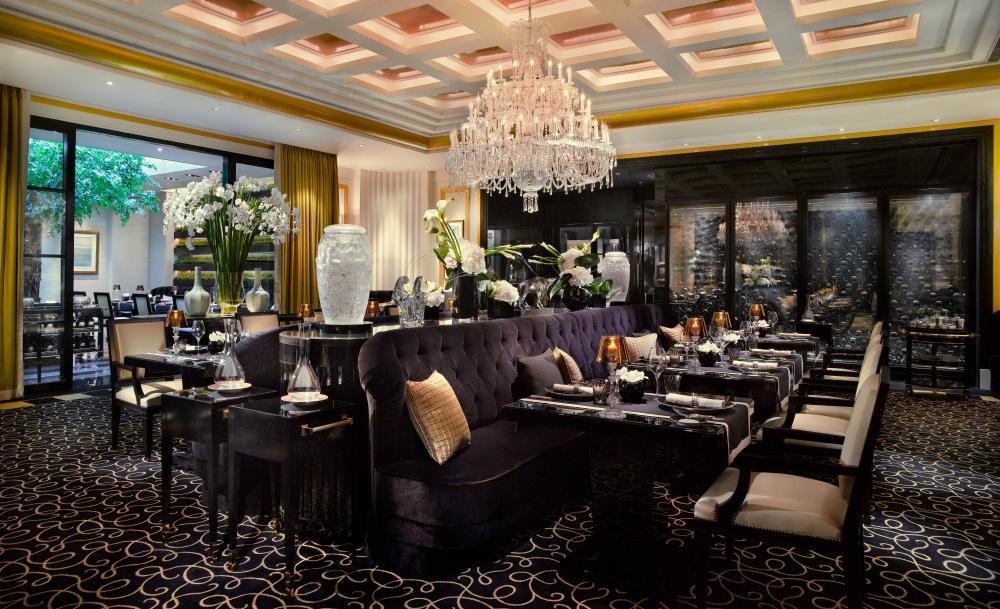Guest columnist Kee Foong laments the western bias of the world’s most stellar restaurant guides.
With much fanfare, Singapore recently joined the club of countries with food deemed sufficiently good to merit a Michelin guide. As the most influential restaurant guide internationally, it, along with the World’s 50 Best Restaurants list, dictates where many travellers will dine in a particular city. Inclusion in the guide and list is a huge deal for chefs and restaurateurs, whose success or failure can depend on it.
Not surprisingly, these guides and lists attract criticism for their methodology, lack of transparency, inconsistencies and absurd choices. When Michelin launched in Tokyo and Hong Kong, they were savaged as much for the inclusions as exclusions, and the inability of the reviewers to distinguish good from bad, especially when it came to local cuisine. With all respect to the chefs who work their butts off and received a star, or should have, the Hong Kong guide in particular is not credible, especially for Chinese cuisine.
The Singapore guide has also come under fire, in particular for being a marketing tool for the Singapore Tourism Board and the guide’s main sponsor, Resorts World. Credibility issues aside, most of the spotlight was on two hawker stalls that became the first in the world to receive stars for street food – Hill Street Tai Hwa Pork Noodle and Hong Kong Soya Sauce Chicken Rice & Noodle. It’s recognition of how good the local food is, or is it?
Michelin and World’s 50 Best Restaurants are overwhelmingly Western-centric – great for Europe and North America, but less so Asia. For example, of 29 starred restaurants in Singapore, only four serve local cuisine, and none of them receive more than one star. Compare that to Paris, which has more than 90 starred restaurants, 90 percent of which are French. On the World’s 50 Best, not a single Chinese restaurant makes the lineup, and only one restaurant serving southeast Asian food – Nahm – makes the list. Instead, there is an uncanny similarity in the style of many establishments.
These criticisms are not new, but more relevant than ever given the increase in food tourism and the influence of such lists and guides on people’s eating behaviour. For many of the top-ranked restaurants in a city, a large proportion of diners are foreign. At Gaggan in Bangkok, a quarter of its customers are from Hong Kong – an astonishing figure.
Perhaps it’s merely a reflection of the world we live in, one where taste is becoming more globalised. After all, one of the hallmarks of a great city is its diversity and variety of cuisines. But it’s a largely one-sided trend that afflicts Asia more so than Europe or the Americas and one that’s happening to the detriment of local cuisine.
On a recent trip to Beijing I was directed by the concierge at the Rosewood hotel to Central Park, a residential development housing a heap of cafes and casual restaurants. I found the place easily but then the challenge began. Of the 20 or more eateries I found, none served Chinese cuisine. No Sichuan, noodles, dumplings, hotpot or any of the other wonderful fare that should be readily available. It made me very hangry indeed.
Last month I wrote about Katamama hotel in Bali and its only restaurant, Movida, which shuns Indonesian fare in favour of a mod Spanish menu. It’s certainly not alone, as the most popular restaurants in surrounding Seminyak are not Balinese, but Italian, French, Spanish, Mexican, pan-Asian, Mod Oz or international.
This is common throughout Asia, as travellers expect and demand access to more familiar, less exotic and less spicy fare. It’s prevalent among luxury globe-trotters, who, for all their claims to being adventurous, often remain within culinary comfort zones, seeking out high-end restaurants that could be anywhere. I’d be more impressed if you were to eat curry or rice for breakfast each morning.
Mind, no international hotel in India or Asia would dream of not putting on a Western breakfast, and it is easier to get bacon and eggs than a local spread at the best five-stars. Yet, when we travel throughout Europe, we are expected to eat the food of that country.
It reeks of double standards, and culinary imperialism. We expect to be able to get a salad, steak, pasta or pizza while in Asia, yet are more forgiving of the lack of decent Thai or Chinese in Europe. Cultural cringe is also a factor, one which drives many of the most talented chefs in Asia to cook Western food, and the most educated locals to seek out Western restaurants.
As travellers, you can do your part to eat local, not just in the farm-to-table sense. Search out dishes unique to your destination. Quiz a resident about their favourite joints, and open your mouth to different textures, swallowing is unlikely to kill you.
Meanwhile, here are five of my favourite LUXE recommended joints to ease you into local cuisine.
Bali – Bambu
Bangkok – Issaya Siamese Club
Hong Kong – The Chairman
Shanghai – Jesse, 41 Tianping Lu, by Huaihai Lu
Singapore – Hua Yu Wee, 42 Upper East Coast Rd
Happy eating!
Follow Kee on Twitter and Instagram @keepicks
– Published 27 September 2016.

